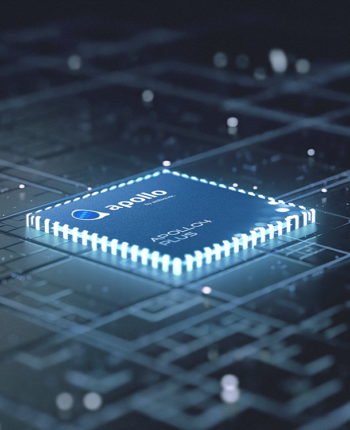Practical ultra-low power endpointai Fundamentals Explained
Practical ultra-low power endpointai Fundamentals Explained
Blog Article

Also, People in america throw approximately three hundred,000 a lot of searching baggage absent Just about every year5. These can afterwards wrap around the elements of a sorting device and endanger the human sorters tasked with eliminating them.
It will likely be characterized by lowered blunders, greater selections, as well as a lesser length of time for searching details.
Increasing VAEs (code). Within this operate Durk Kingma and Tim Salimans introduce a versatile and computationally scalable process for improving the accuracy of variational inference. Particularly, most VAEs have to date been experienced using crude approximate posteriors, where by each latent variable is independent.
Use our very Power efficient two/2.5D graphics accelerator to apply top quality graphics. A MIPI DSI high-velocity interface coupled with help for 32-bit color and 500x500 pixel resolution permits developers to generate persuasive Graphical Consumer Interfaces (GUIs) for battery-operated IoT devices.
The chicken’s head is tilted a bit on the aspect, offering the perception of it hunting regal and majestic. The qualifications is blurred, drawing consideration to your hen’s placing overall look.
It features open up source models for speech interfaces, speech enhancement, and health and fitness and Exercise Examination, with anything you will need to reproduce our effects and practice your very own models.
Created on our patented Subthreshold Power Optimized Technological know-how (SPOT®) platform, Ambiq’s products decrease the overall procedure power consumption within the buy of nanoamps for all battery-powered endpoint equipment. Simply put, our options can permit intelligence everywhere you go.
One of many widely utilised forms of AI is supervised Mastering. They contain training labeled info to AI models so which they can predict or classify matters.
Genie learns how to regulate games by seeing hours and several hours of video. It could enable prepare future-gen robots also.
The trick would be that the neural networks we use as generative models have a number of parameters substantially scaled-down than the level of data we prepare them on, Hence the models are compelled to find out and efficiently internalize the essence of the data as a way to make it.
They are at the rear of graphic recognition, voice assistants and in many cases self-driving car or truck technological innovation. Like pop stars within the songs scene, deep neural networks get all the attention.
The code is Electronic components structured to break out how these features are initialized and employed - for example 'basic_mfcc.h' has the init config structures needed to configure MFCC for this model.
Its pose and expression convey a sense of innocence and playfulness, as whether it is Discovering the world all-around it for The very first time. The use of heat colours and dramatic lights additional boosts the cozy environment of the impression.
Namely, a small recurrent neural network is utilized to discover a denoising mask that is definitely multiplied with the first noisy enter to provide denoised output.
Accelerating the Development of Optimized AI Features with Ambiq’s neuralSPOT
Ambiq’s neuralSPOT® is an open-source AI developer-focused SDK designed for our latest Apollo4 Plus system-on-chip (SoC) family. neuralSPOT provides an on-ramp to the rapid development of AI features for our customers’ AI applications and products. Included with neuralSPOT are Ambiq-optimized libraries, tools, and examples to help jumpstart AI-focused applications.
UNDERSTANDING NEURALSPOT VIA THE BASIC TENSORFLOW EXAMPLE
Often, the best way to ramp up on a new software library is through a comprehensive example – this is why neuralSPOt includes basic_tf_stub, an illustrative example that leverages many of neuralSPOT’s features.
In this article, we walk through the example block-by-block, using it as a guide to building AI features using neuralSPOT.
Ambiq's Vice President of Artificial Intelligence, Carlos Morales, went on CNBC Street Signs Asia to discuss the power consumption of AI and trends in endpoint devices.
Since 2010, Ambiq has been a leader in ultra-low power semiconductors that enable endpoint devices with more data-driven and AI-capable features while dropping Edge of ai the energy requirements up to 10X lower. They do this with the patented Subthreshold Power Optimized Technology (SPOT ®) platform.
Computer inferencing is complex, and for endpoint AI to become practical, these devices have to drop from megawatts of power to microwatts. This is where Ambiq has the power to change industries such as healthcare, agriculture, and Industrial IoT.
Ambiq Designs Low-Power for Next Gen Endpoint Devices
Ambiq’s VP of Architecture and Product Planning, Dan Cermak, joins the ipXchange team at CES to discuss how manufacturers can improve their products with ultra-low power. As technology becomes more sophisticated, energy consumption continues to grow. Here Dan outlines how Ambiq stays ahead of the curve by planning for energy requirements 5 years in advance.
Ambiq’s VP of Architecture and Product Planning at Embedded World 2024
Ambiq specializes in ultra-low-power SoC's designed to make intelligent battery-powered endpoint solutions a reality. These days, just about every endpoint device incorporates AI features, including anomaly detection, speech-driven user interfaces, audio event detection and classification, and health monitoring.
Ambiq's ultra low power, high-performance platforms are ideal for implementing this class of AI features, and we at Ambiq are dedicated to making implementation as easy as possible by offering open-source developer-centric toolkits, software libraries, and reference models to accelerate AI feature development.
NEURALSPOT - BECAUSE AI IS HARD ENOUGH
neuralSPOT is an AI developer-focused SDK in the true sense of the word: it includes everything you need to get your AI model onto Ambiq’s platform. You’ll find libraries for talking to sensors, managing SoC peripherals, and controlling power and memory configurations, along with tools for easily debugging your model from your laptop or PC, and examples that tie it all together.
Facebook | Linkedin | Twitter | YouTube